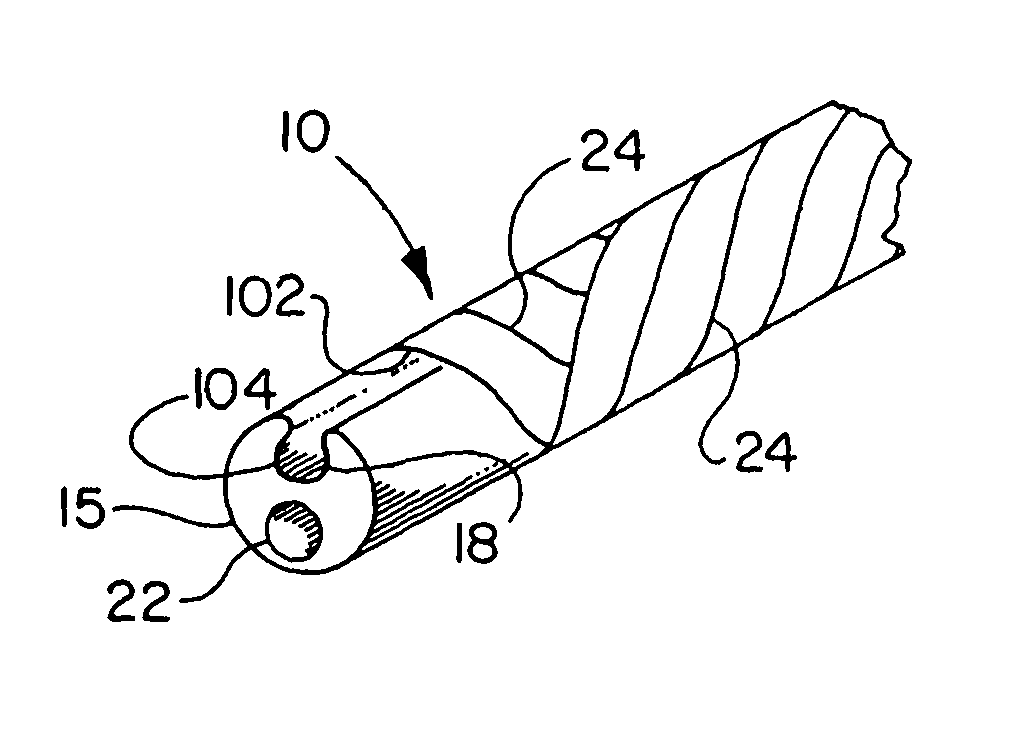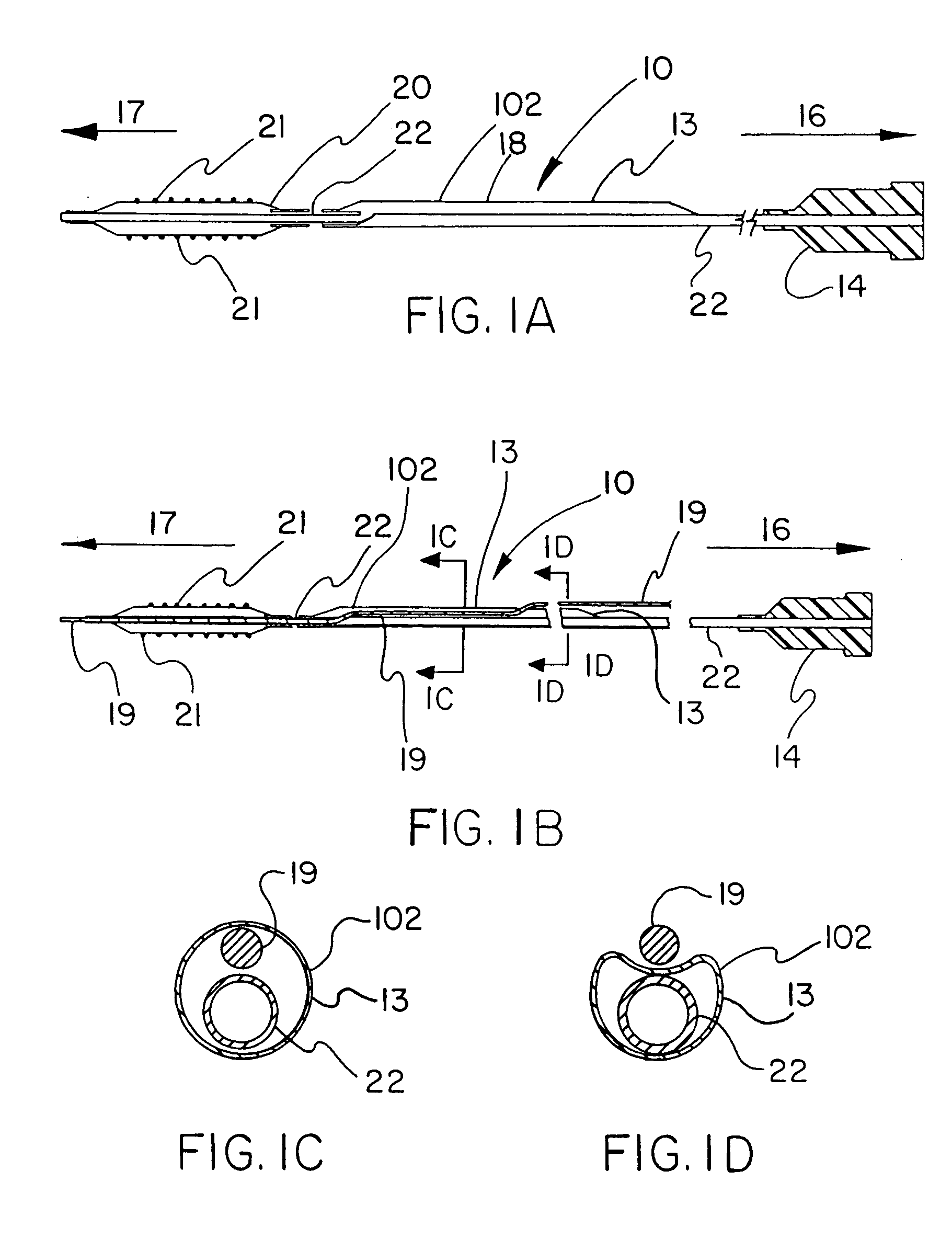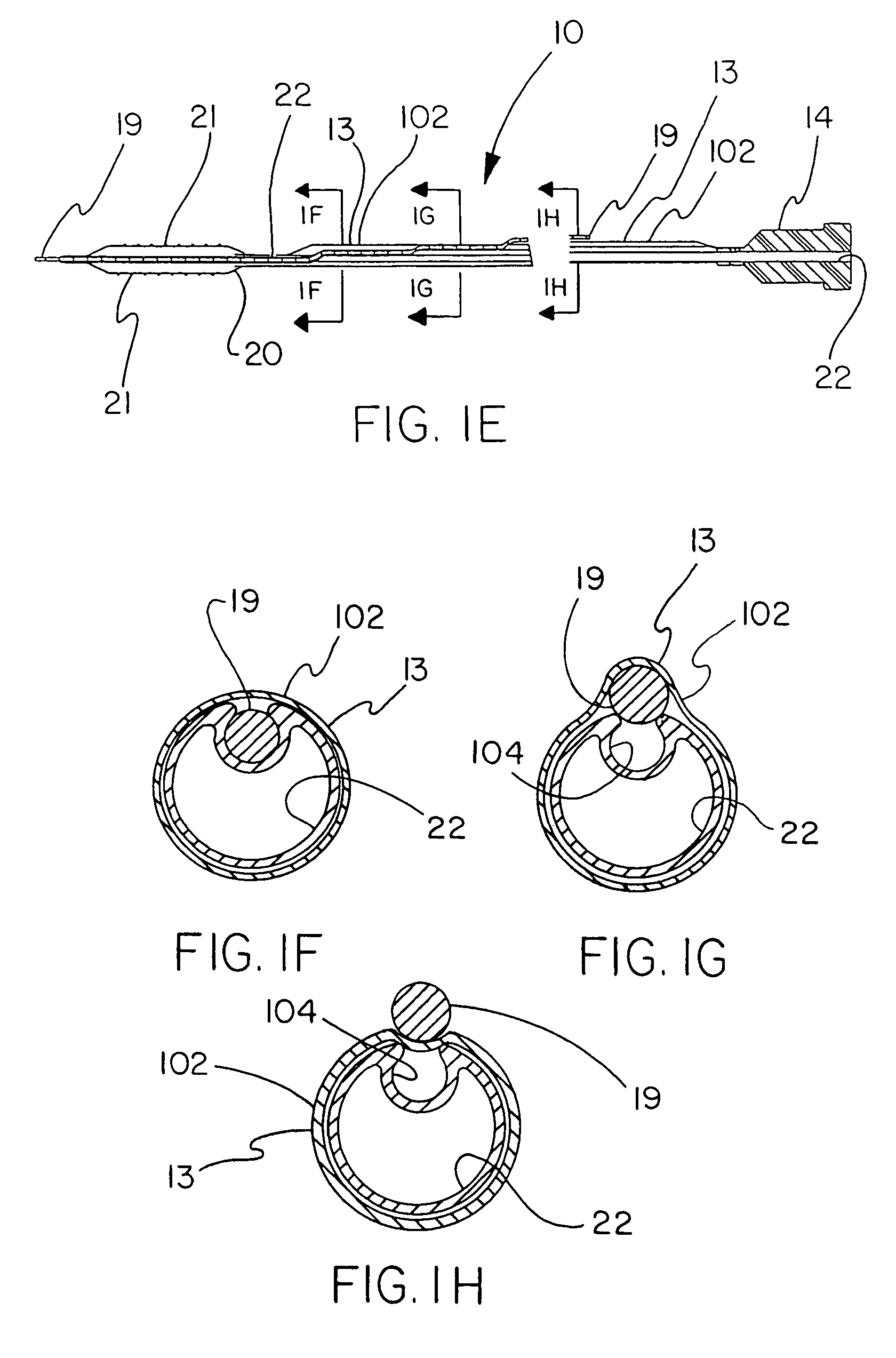Puncturable catheter
a catheter and stent technology, applied in the field of catheters, can solve the problems of less tear resistan
- Summary
- Abstract
- Description
- Claims
- Application Information
AI Technical Summary
Benefits of technology
Problems solved by technology
Method used
Image
Examples
Embodiment Construction
[0044]FIGS. 1A-1H describe the catheter 10 of the present invention provided with a thin, puncturable cover 102 over the guidewire lumen 18. Typically, catheter 10 may include devices such as a catheter balloon 20 and / or stent 21 at its distal end 17 and a hub 14 at the proximal end 16. As shown by FIGS. 1A-1H, the thin, puncturable cover 102, in this instance a thin-walled a thin tubular sheath 13 (forming guidewire lumen 18) designed to be punctured by the back end of a guidewire 19, may be placed coaxially about the inflation lumen 22. The length of the thin tubular sheath 13 may extend over all or part of the length of catheter shaft.
[0045]After feeding guidewire 19 through the distal section of the guidewire lumen 18 and into the thin-walled tubular sheath 13, the physician may chose any desired location along the length of thin-walled tubular sheath 13 at which to puncture the thin, puncturable cover 102 with the guidewire 19. In this fashion the physician may select his prefe...
PUM
 Login to View More
Login to View More Abstract
Description
Claims
Application Information
 Login to View More
Login to View More - R&D
- Intellectual Property
- Life Sciences
- Materials
- Tech Scout
- Unparalleled Data Quality
- Higher Quality Content
- 60% Fewer Hallucinations
Browse by: Latest US Patents, China's latest patents, Technical Efficacy Thesaurus, Application Domain, Technology Topic, Popular Technical Reports.
© 2025 PatSnap. All rights reserved.Legal|Privacy policy|Modern Slavery Act Transparency Statement|Sitemap|About US| Contact US: help@patsnap.com



